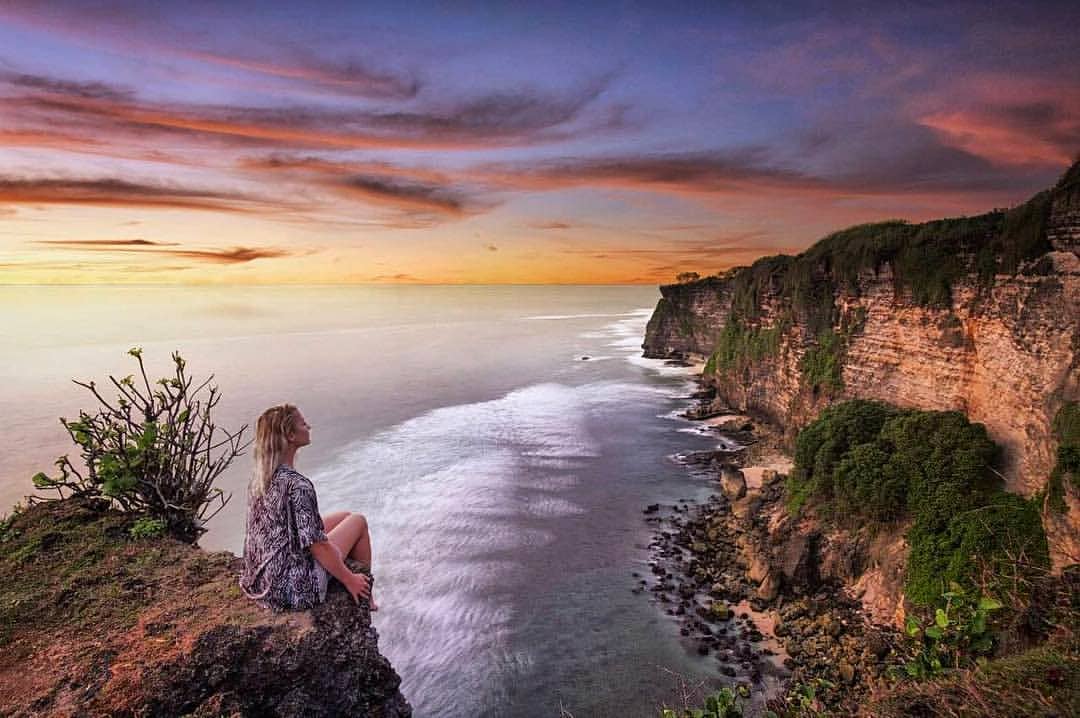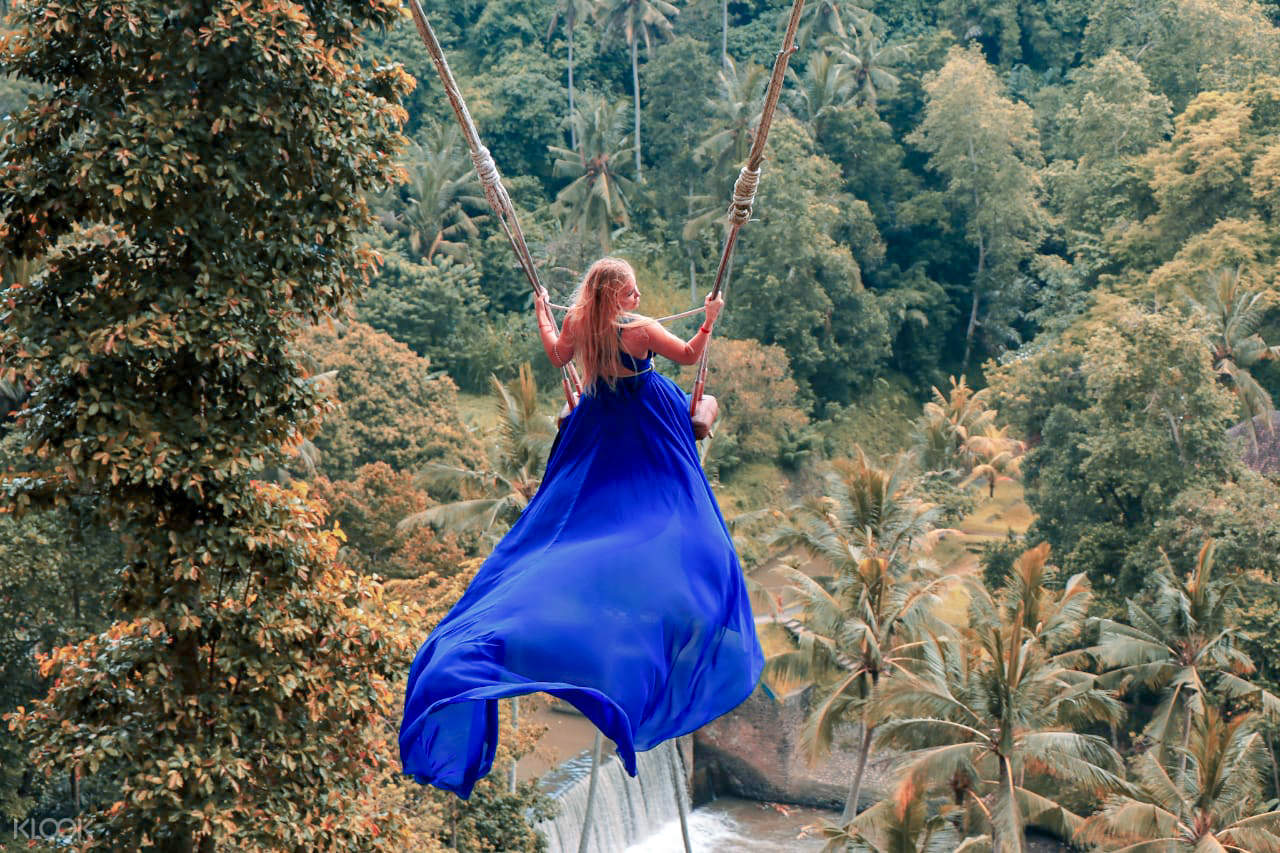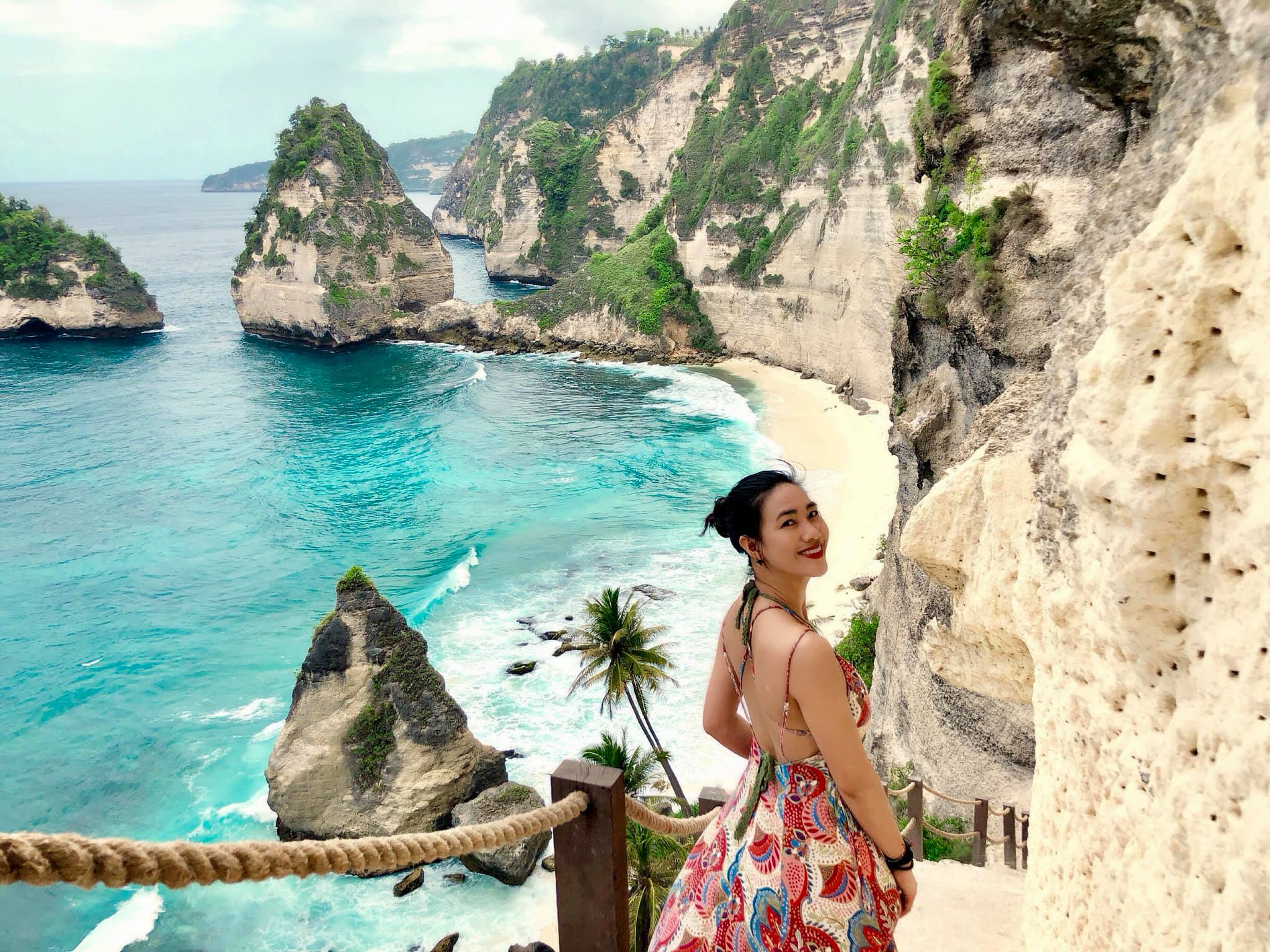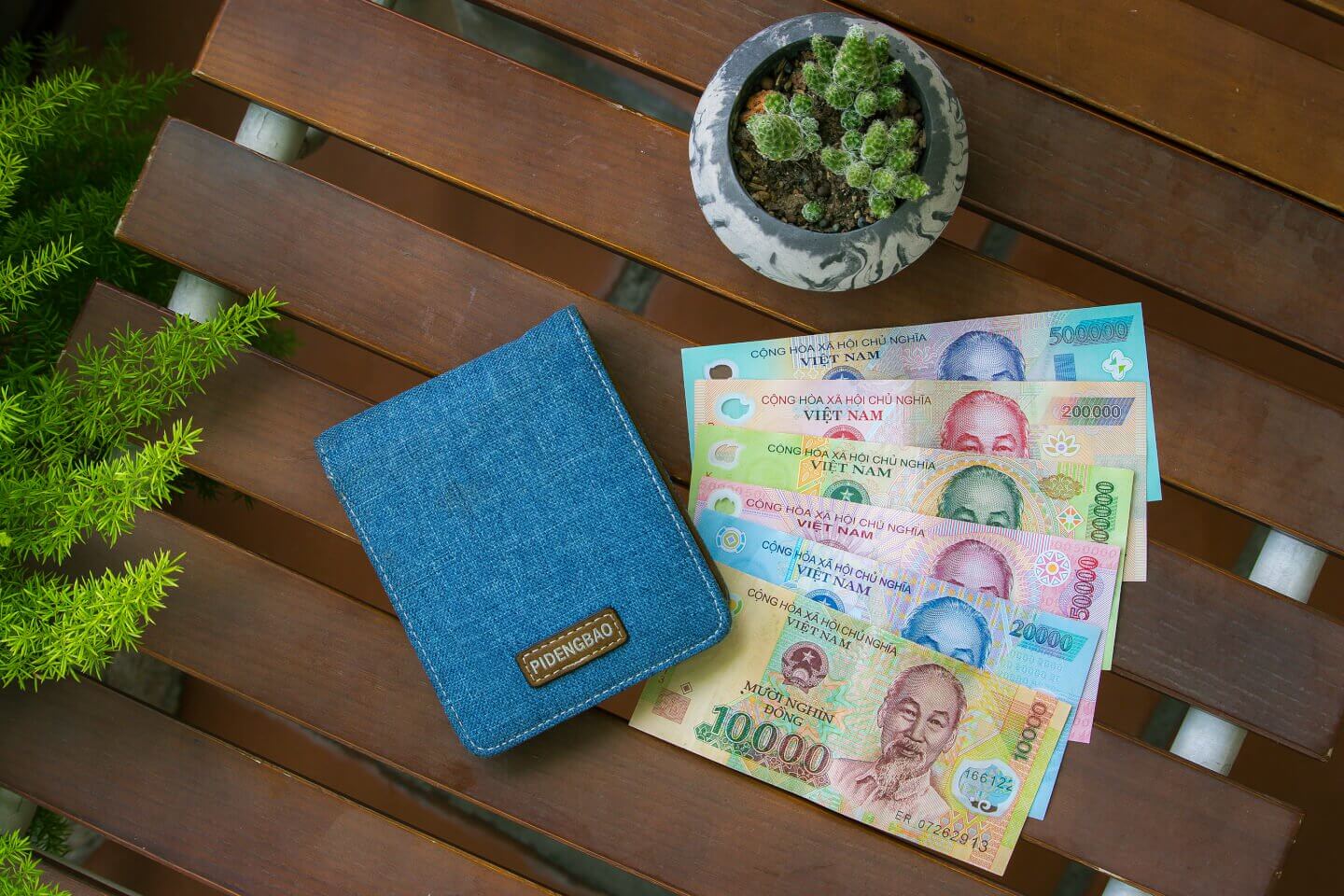15 Best Places to Visit in Bali (Hidden Gems + Tips)
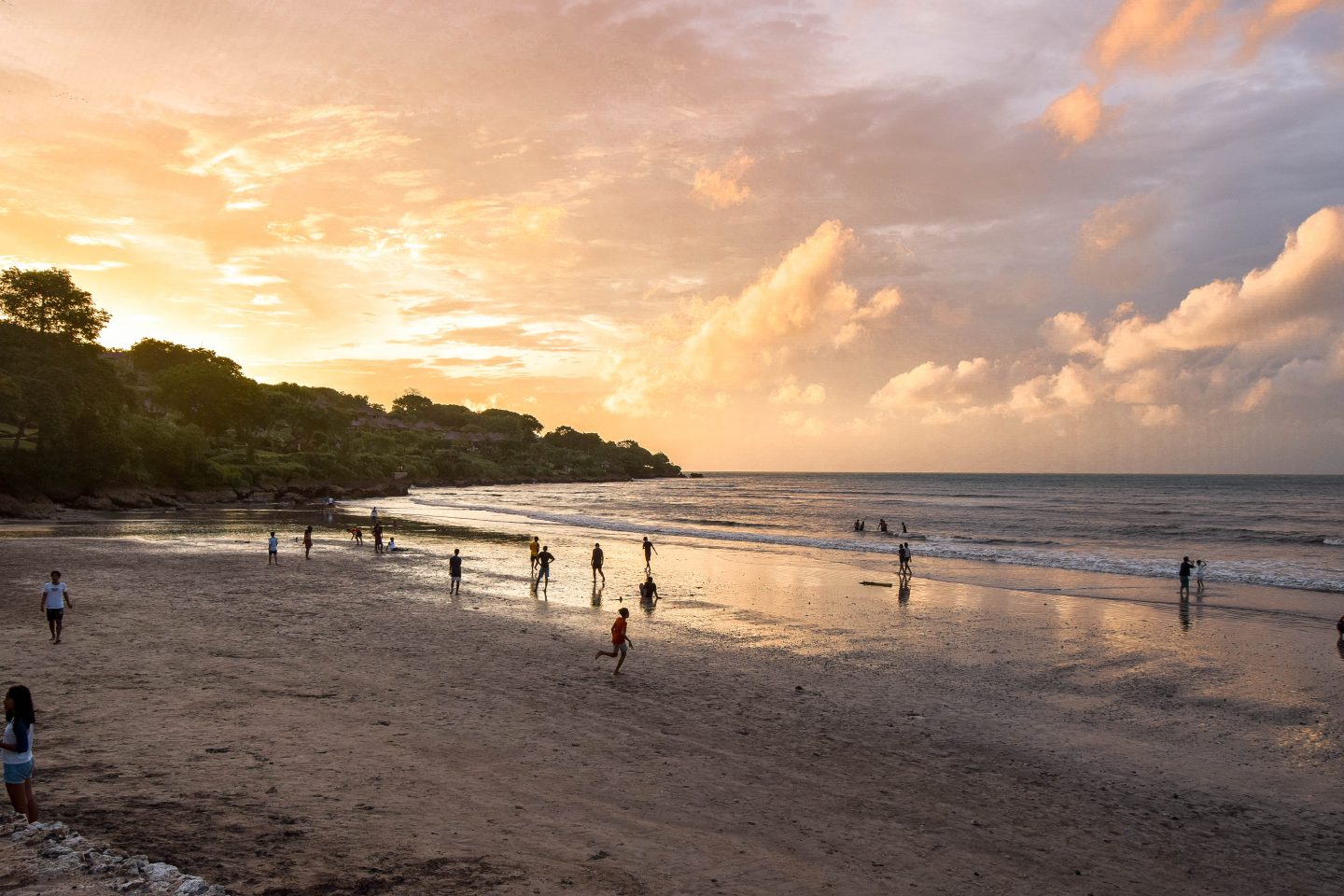
Planning your dream trip to Bali? You’re not alone - Bali remains one of the most sought-after travel destinations in the world, and for good reason. From its jaw-dropping waterfalls and ancient temples to pristine beaches and vibrant culture, this Indonesian gem offers something magical for every kind of traveler.
But here's the thing most people won’t tell you:
It’s not just about ticking off popular tourist spots—it’s about crafting a journey that fits your vibe. Whether you're craving heart-pounding adventure, a spiritual escape, or lazy beach days with coconut in hand, Bali can be everything you want—and more.
In this guide, I’ll take you through the 15 must-visit places in Bali for 2025—including a few hidden gems locals wish you’d skip (but you absolutely shouldn't!). Think of this as your ultimate Bali blueprint, complete with insider tips, planning advice, and real traveler insights to help you explore smarter, deeper, and better.
So, if you're asking yourself,
“Where should I go in Bali for the best experience?”
You're exactly where you need to be.
We usually suggest our guests pick one location every day in Bali. Then on top of that, add one extra day for a little bit of relaxation.
Our Top Trending Tours
15 Must-Visit Places in Bali (2025 Edition)
Handpicked locations with real traveler insights, photo-worthy views, and local tips you won’t find on generic travel blogs.
1. Kelingking Beach, Nusa Penida
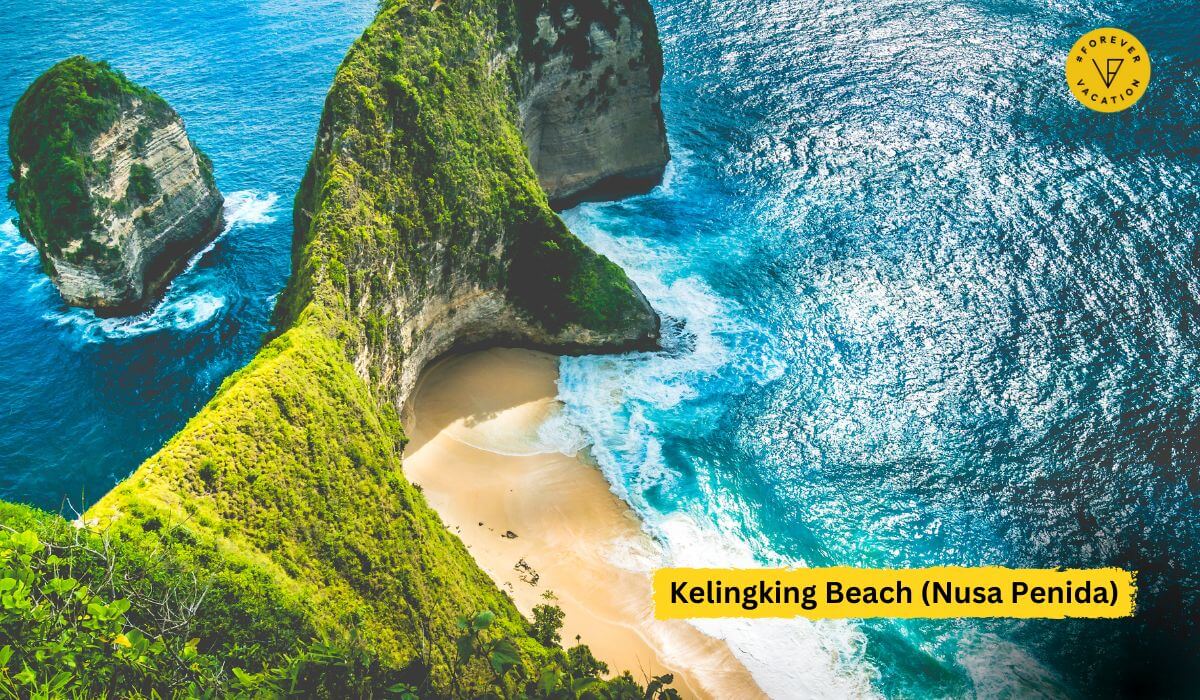
If there’s one place that defines Bali’s jaw-dropping beauty—it’s Kelingking Beach. Located on the island of Nusa Penida, this natural wonder looks like a giant T-Rex bending its head into the ocean. It’s one of those views that makes you stop, stare, and say: “Wow, this is real?”
But here’s what most people don’t tell you:
The hike down is not for the faint-hearted. The narrow trail is steep, rocky, and has only bamboo railings in some parts. But if you're up for the challenge, the reward is a secluded stretch of white sand framed by turquoise waves—one of the most untouched and surreal beaches in Indonesia.
Why It’s Worth It:
- Unreal cliff views = guaranteed viral photo
- Water so clear it looks photoshopped
- Far fewer tourists make it down to the actual beach
How to Get There:
- Take a 45-minute ferry from Sanur (mainland Bali) to Nusa Penida
- Hire a private driver or scooter (note: roads can be bumpy!)
- Kelingking is on the west coast of the island—pair it with Broken Beach or Angel’s Billabong for a full day
Insider Tips:
- Go early (arrive before 9 AM) to avoid crowds and harsh sun
- Bring water, proper shoes, and don’t attempt the descent if it rained recently
- Drone shots? You’ll want one. Just check for flight regulations at the viewpoint
- Not into hiking? The cliff-top viewpoint alone is 100% worth the trip
If you are looking for a way to liven up your Instagram feed, Nusa Penida Instagram tour can blow you away.
2. Ubud - The Spiritual and Cultural Heart of Bali

If Bali had a soul, Ubud would be it.
Nestled in the lush jungle highlands of central Bali, Ubud is where ancient traditions, vibrant art, and serene landscapes all come together. It’s the place where travelers come not just to explore—but to slow down, reflect, and reconnect.
Unlike Bali’s beach towns, Ubud isn’t about partying or surfing. It’s about soul-soothing rice terraces, temples tucked into the forest, and the quiet hum of creativity that fills every street.
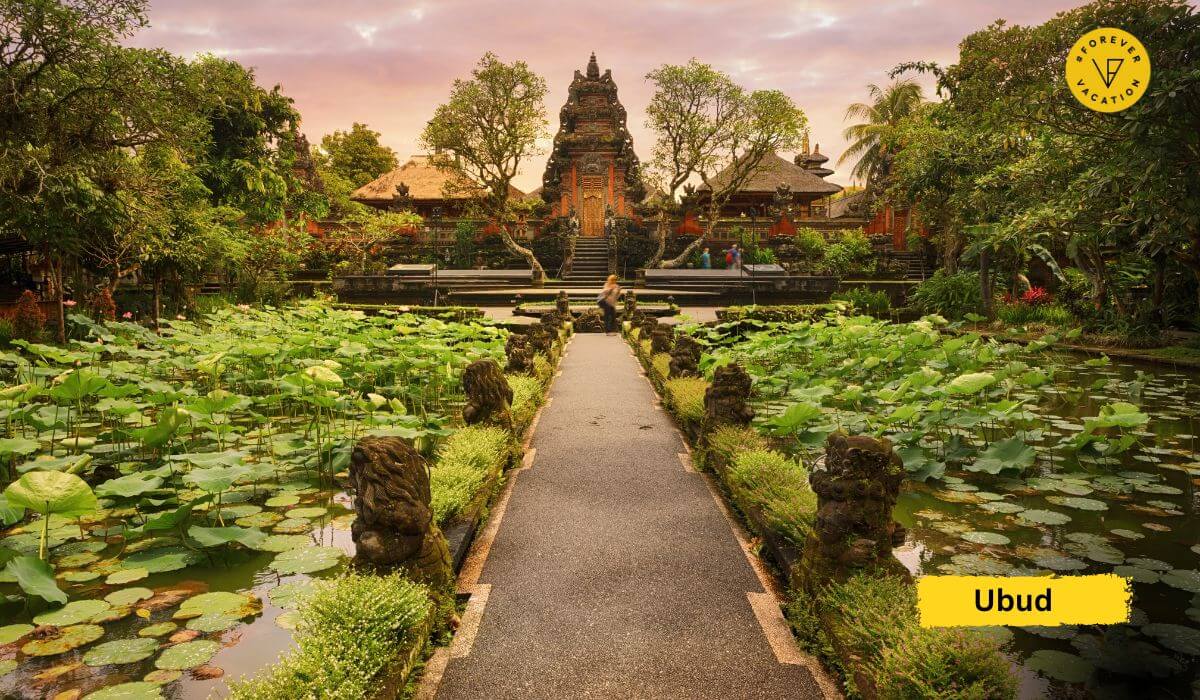
What Makes Ubud Special:
- Home to the Tegalalang Rice Terraces, the Sacred Monkey Forest, and countless temples
- The epicenter of yoga and wellness retreats in Southeast Asia
- Bursting with local art, traditional dance performances, and amazing cafés with jungle views
- A great base for exploring waterfalls, coffee plantations, and hidden cultural gems
Must-Do Experiences in Ubud:
- Wander through the Sacred Monkey Forest Sanctuary (but hold onto your sunglasses!)
- Visit Tirta Empul Temple for a traditional purification ritual
- Explore Campuhan Ridge Walk during sunrise or sunset
- Try a sound healing or meditation session at one of Ubud’s many wellness centers
- Shop at the Ubud Art Market for handmade crafts and souvenirs
Our Tips for Visiting Ubud:
- Stay at least 2–3 nights to feel the magic—Ubud isn’t meant to be rushed
- Book a Balinese cooking class or painting workshop to immerse in local life
- Many cafés and retreats offer breathtaking rice field views—perfect for working or relaxing
3. Tegalalang Rice Terraces – A Postcard of Bali’s Beauty

You’ve seen the photos: emerald green terraces cascading down hillsides, framed by palm trees and dotted with traditional Balinese huts. That’s Tegalalang, and trust me—it’s just as magical in person.
Located just 20 minutes north of Ubud, the Tegalalang Rice Terraces are a UNESCO-listed masterpiece of ancient Balinese irrigation, known as subak. But this isn’t just about farming—it’s a living, breathing work of art, shaped by generations and maintained by local farmers who welcome visitors with a smile.
Why You Should Visit:
- One of the most photographed places in Bali
- Serene morning walks with the sound of flowing water and chirping birds
- A real glimpse into rural Balinese life and culture
What to Do at Tegalalang:
- Take a peaceful walk through the rice paddies (bring comfy shoes!)
- Stop at small local cafés and enjoy fresh coconut with a view
- Try one of the signature jungle swings for that “flying over paradise” photo
- Support locals by donating or buying handcrafted souvenirs along the trail
Keep in Mind:
- Best time to visit: Early morning (before 9 AM) for golden light and cool temps
- Entrance is small-fee based, with optional donations at different sections
- Visit between February and April when the rice is lush and green
- Be respectful—this is someone’s livelihood, not just a photo op
4. Uluwatu Temple - Cliffside Sunsets & Sacred Vibes
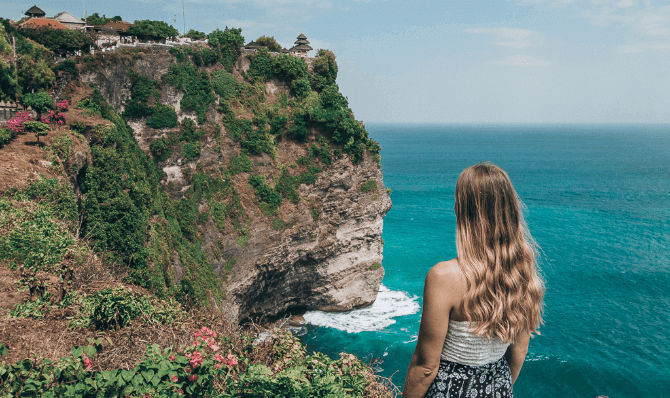
Perched on the edge of a dramatic limestone cliff, Uluwatu Temple (Pura Luhur Uluwatu) is one of Bali’s most iconic sea temples—and for good reason. Imagine ancient stone shrines, crashing turquoise waves below, and a fiery orange sunset painting the sky. It’s not just a view—it’s an experience that feels bigger than you.
Built in the 11th century, this temple is dedicated to the sea gods and remains a deeply spiritual place for Balinese Hindus. But for travelers, it offers a rare blend of culture, scenery, and pure cinematic drama.
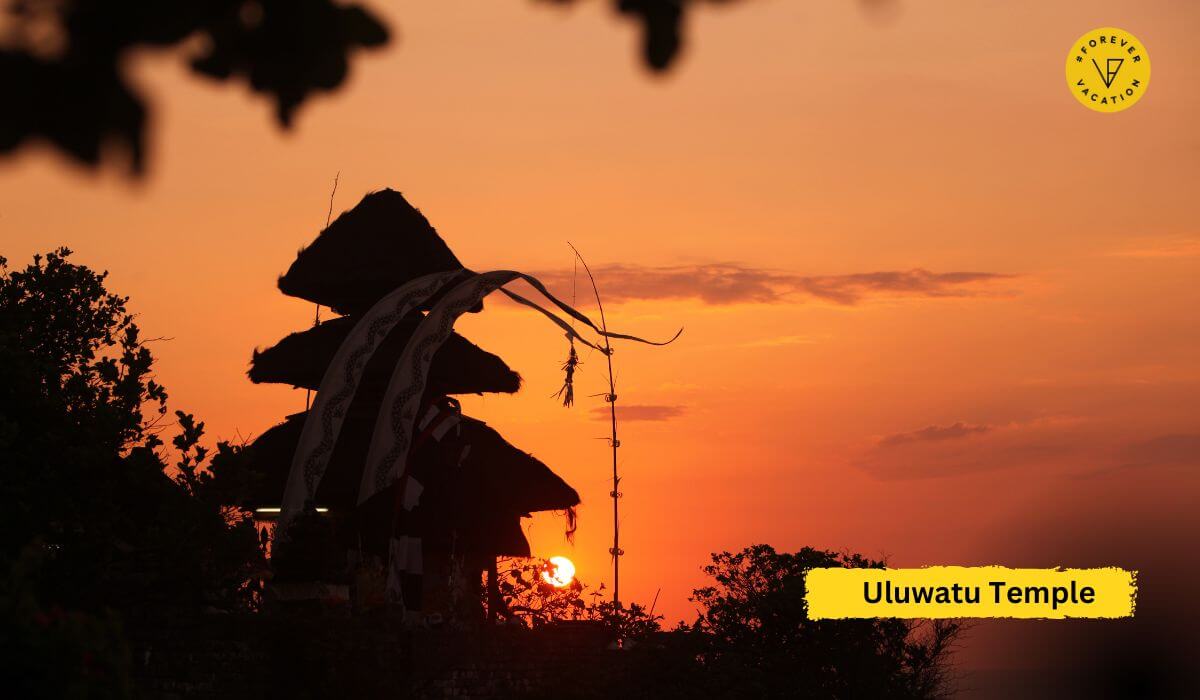
Why You Shouldn’t Miss It:
- Unreal sunset views over the Indian Ocean
- Watch the Kecak Fire Dance—a mesmerizing traditional performance held every evening on the cliff
- Walk along the cliffside pathway for panoramic ocean shots and temple silhouettes
What to Expect:
- Entry includes a sarong rental (required for temple grounds)
- You’ll likely encounter mischievous monkeys—they’re bold and clever, so keep valuables tucked away
- The Kecak dance starts around 6 PM—get there by 5:00 to secure a good seat
Important Tips:
- Pair your visit with nearby Melasti Beach or Single Fin beach club for the ultimate Uluwatu day
- The cliff walk extends beyond the main temple—walk further for quieter spots and fewer crowds
- Bring a light jacket or shawl—it can get breezy by sunset.
5. Melasti Beach – Bali’s Most Beautiful Hidden Shoreline

Tucked away beneath towering limestone cliffs on Bali’s southern coast, Melasti Beach is the kind of place that makes you stop mid-sentence and just stare. With soft golden sand, clear turquoise water, and dramatically carved cliffs, this beach feels like something out of a movie—except it's real, and you can walk right into it.
It’s quieter than Bali’s more famous beaches, and that’s exactly what makes it so special. Whether you’re swimming, sunbathing, snapping photos, or just soaking in the scenery, Melasti is that blissful escape you didn’t know you needed.
What Makes Melasti Special:
- Unbeatable views with crystal-clear water and epic cliffside backdrops
- Wide, clean shoreline—perfect for swimming and family-friendly
- Fewer crowds than nearby hotspots like Kuta or Seminyak
- Home to some of Bali’s best beach clubs like Palmilla and Tropical Temptation
How to Get There:
- Located in Ungasan, about 30 minutes from Uluwatu Temple
- Easily accessible by scooter or private driver
- Paved road winds dramatically down the cliff—photo-worthy drive alert
Insider Tips:
- Visit in the morning or late afternoon for softer light and fewer people
- There’s a small entrance fee, plus extra if you park
- Stay for sunset if you can—the sky turns wild shades of pink and gold
- If you want a luxurious beach day, book a cabana at one of the clubs
6. Sacred Monkey Forest Sanctuary – Where Nature & Myth Collide
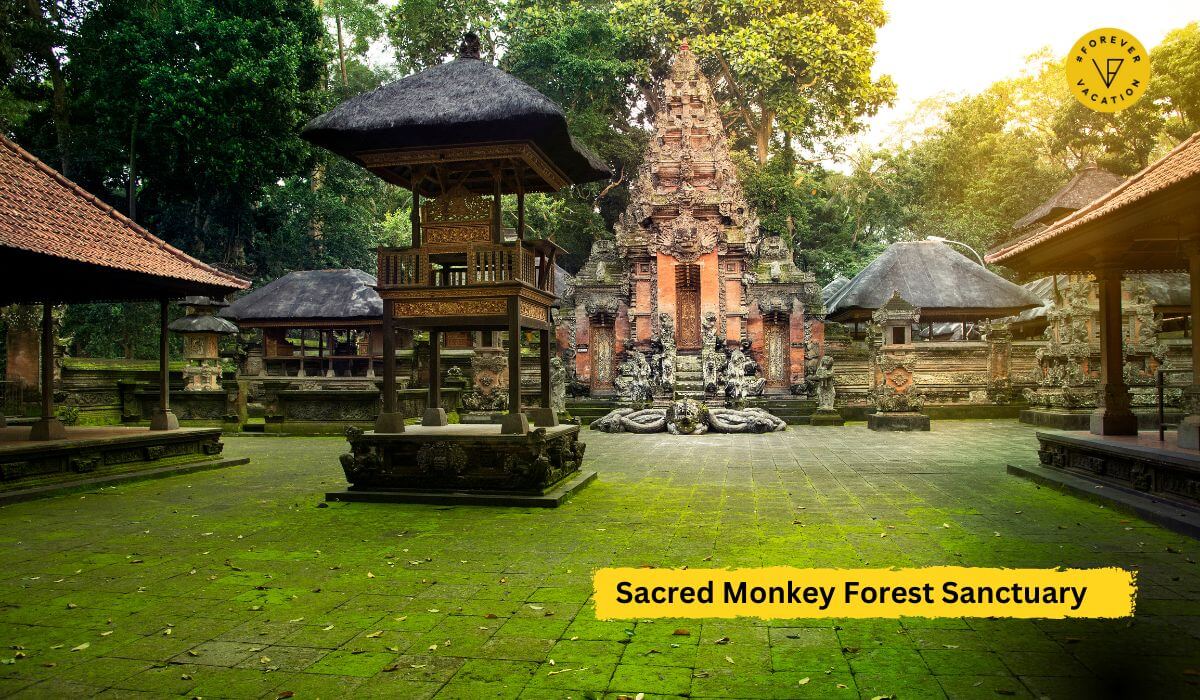
Imagine ancient temples wrapped in vines, moss-covered statues hiding in the shadows, and hundreds of curious monkeys swinging through towering banyan trees. Welcome to the Sacred Monkey Forest Sanctuary, one of Ubud’s most iconic (and wildly entertaining) attractions.
More than just a monkey hangout, this forest is a spiritual and ecological treasure, home to three 14th-century temples and over 1,200 long-tailed macaques. It’s chaotic, it’s beautiful, and yes—it’s a little unpredictable in the best way.
What to Expect:
- Walk among free-roaming monkeys in their natural habitat
- Explore ancient Balinese temples set deep in the forest
- Discover peaceful trails, jungle bridges, and mystical carvings
- Learn about conservation and cultural preservation efforts
Monkey Manners 101:
- Don’t bring food—they will find it (and take it)
- Keep bags zipped and don’t dangle sunglasses, phones, or jewelry
- Never touch or stare directly at the monkeys—they see it as a challenge
- If one climbs on you (yes, it happens), stay calm—they’ll hop off soon
Must Know Tips:
- Arrive early for fewer crowds and more relaxed monkeys
- Tickets are affordable (~IDR 80,000 per adult)
- Hire a local guide if you want stories behind the temples and carvings
- Stop by the nearby Ubud Palace or Market afterward—they’re walkable from here
7. Jatiluwih Rice Terraces – Bali’s Lush, Underrated Gem
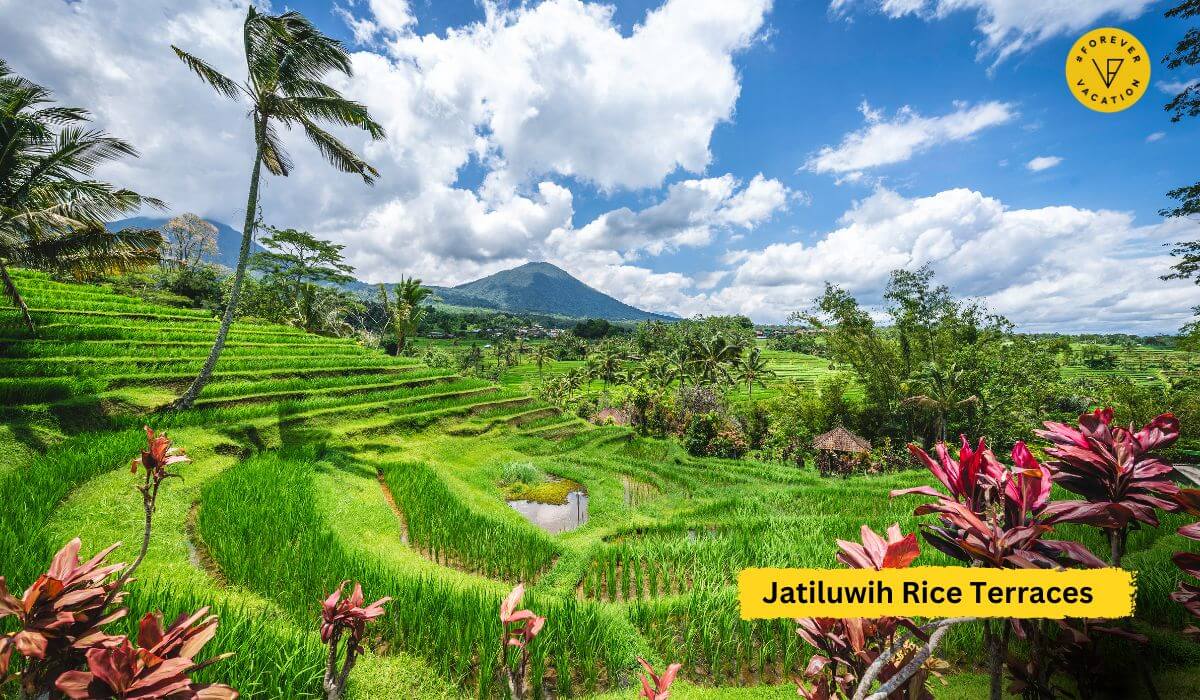
If Tegalalang is Bali’s most famous rice terrace, Jatiluwih is its peaceful, sprawling, and seriously underrated big sister.
Located in the highlands of central Bali, these terraces cover over 600 hectares of breathtaking landscape—and they’re not just beautiful, they’re historic. The area uses the ancient subak irrigation system, which is why UNESCO gave it a big thumbs up as a cultural heritage site.
Unlike some of the more Instagram-fueled spots, Jatiluwih feels calm, authentic, and uncrowded. You’re more likely to pass farmers and locals than tourist crowds, which makes it perfect if you want to reconnect with nature without dodging tripods.
Why You’ll Love It:
- Massive panoramic views of layered rice paddies and misty mountains
- Walking and biking trails that take you deep into the fields
- Cooler temperatures thanks to the higher altitude
- Fewer tourists, more authentic Balinese countryside vibes
How to Get There:
- About 1.5 to 2 hours from Ubud by car or scooter
- Combine your trip with nearby attractions like Batukaru Temple or Ulun Danu Beratan Temple
Entrance fee is minimal (~IDR 40,000) and worth every rupiah
Tips for You:
- Visit between February and April for peak green season
- Stop for lunch at one of the warungs (local cafés) overlooking the terraces
- Bring water, a hat, and sunscreen—the trails are exposed and can get warm
- Don’t rush—slow walks here are the whole point
8. Tirta Empul Temple – Purify Your Body, Mind & Soul

Tucked away in the cool highlands near Ubud, Tirta Empul Temple is more than just a beautiful sacred site—it’s a place of spiritual cleansing, deep cultural meaning, and quiet introspection.
This ancient Hindu water temple, dating back to 960 AD, is known for its holy spring water that flows through 13 stone spouts into a large bathing pool. Locals and visitors alike come here to participate in a purification ritual, where you bow your head under each spout to symbolically cleanse your thoughts, fears, and negativity.
It’s a humbling experience—powerful whether or not you’re religious.
Why It’s Special:
- One of the most important spiritual temples in Bali
- Open to everyone, regardless of faith
- The purification ritual is a once-in-a-lifetime memory
- Set in a tranquil jungle backdrop with koi ponds and ornate carvings
What You Need to Know:
- Located about 30 minutes from Ubud
- Entry fee is ~IDR 50,000 and includes a sarong rental (required)
- You can rent a separate sarong and sash if you plan to enter the water
- Lockers are available to store your clothes and valuables
Read These Tips Before You Visit:
- Arrive early in the morning for fewer people and a quieter ritual
- Follow the locals’ lead—start on the left and move right through each spout
- Bring a towel and change of clothes if you plan to enter the water
- Respect the space—this isn’t just a tourist site; it’s an active place of worship
9. Besakih Temple – The Majestic Mother Temple of Bali
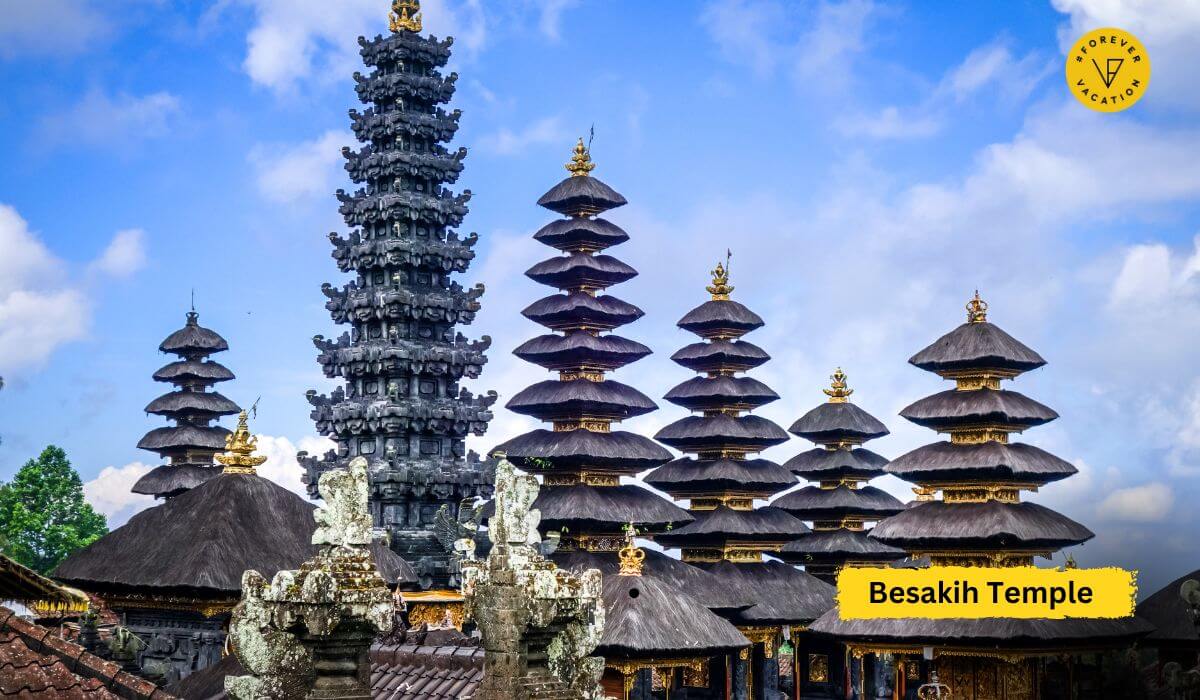
High on the slopes of Mount Agung, Bali’s most sacred volcano, sits Besakih Temple—a vast, awe-inspiring complex known as the Mother Temple of Bali. With more than 80 individual temples layered up the mountainside, it’s not just a place of worship—it’s a powerful symbol of Balinese culture, spirituality, and resilience.
This is where the island’s most important religious ceremonies take place, and where locals come to pray and make offerings. For visitors, it's a chance to witness centuries of tradition, feel the spiritual gravity of the land, and take in some of the most breathtaking views in Bali.
Why You Should Visit:
- The largest and holiest temple complex in Bali
- Built on the side of a volcano with panoramic mountain views
- Deeply spiritual atmosphere and rich cultural significance
- An essential stop for those seeking authentic connection to Balinese heritage
What to Expect:
- Located in eastern Bali, about 2 hours from Ubud
- Entrance includes sarong rental and a local guide (included in most tickets)
- Be prepared for lots of stairs—this is a mountainside temple after all
- Temples are arranged in terraces, so you’ll ascend gradually as you explore
Pro Tip: Try to visit on a clear day—you’ll get dramatic views of Mount Agung in the background
10. Tirta Gangga – Bali’s Royal Water Garden
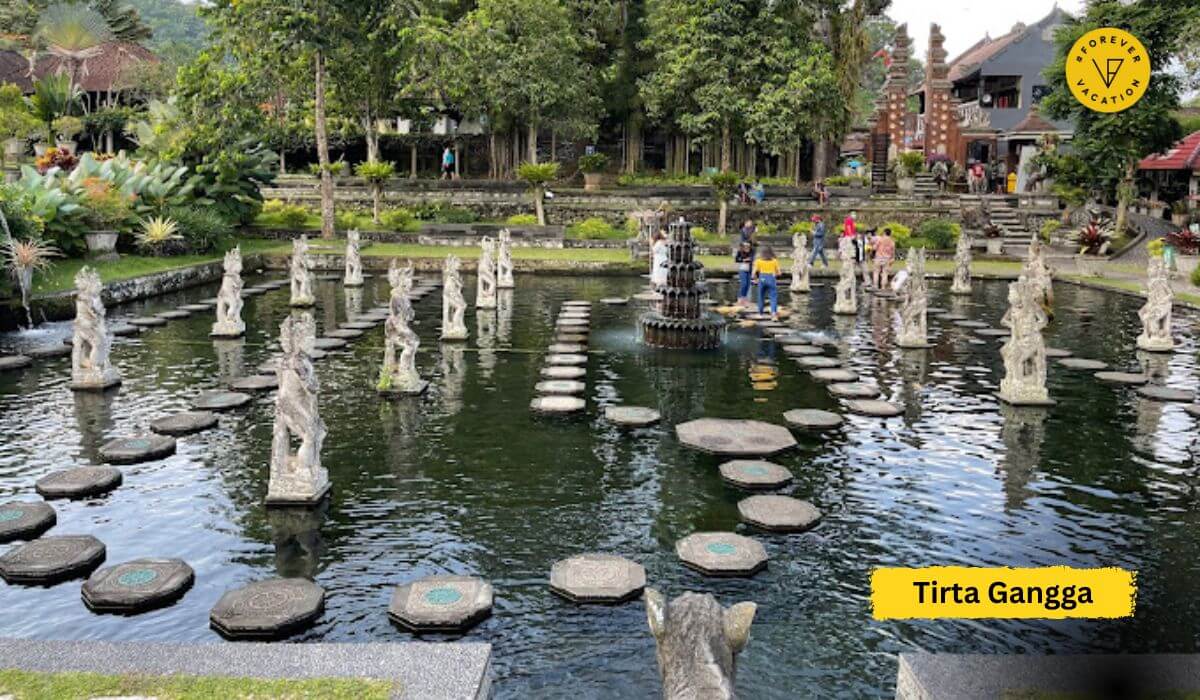
Stepping into Tirta Gangga feels like entering a dream—where koi-filled pools, elegant fountains, and stone stepping paths create a peaceful, picture-perfect escape. Once a royal palace for the Karangasem kingdom, this tranquil water garden is now one of Bali’s most serene and photogenic attractions.
The name translates to “Water of the Ganges”, symbolizing sacred purity in Hindu belief. The atmosphere here is quiet, graceful, and perfect for a slow stroll, a bit of reflection, or a standout Instagram shot.
What to See & Do:
- Walk the famous stepping stones across the koi pond (just be patient—it’s a popular photo op)
- Admire the tiered fountains, lotus-filled pools, and statues of Balinese deities
- Feed the koi fish (food is available at the entrance)
- Explore the lush gardens, bridges, and tucked-away shrines around the complex
Getting There:
- Located in East Bali, about 2 hours from Ubud or 30 minutes from Amed
- Easy to combine with a visit to Lempuyang Temple or Virgin Beach
- Entry fee is around IDR 50,000 (~$3 USD)
Must Know Tips:
- Arrive early or late afternoon for softer light and fewer crowds
- The stepping stones are slippery—wear shoes with grip or go barefoot
- Want a peaceful moment? Head to the back ponds—they’re usually less crowded
- Bring small cash for fish food and local snacks from the vendors outside
11. Pura Lempuyang – The Gates of Heaven
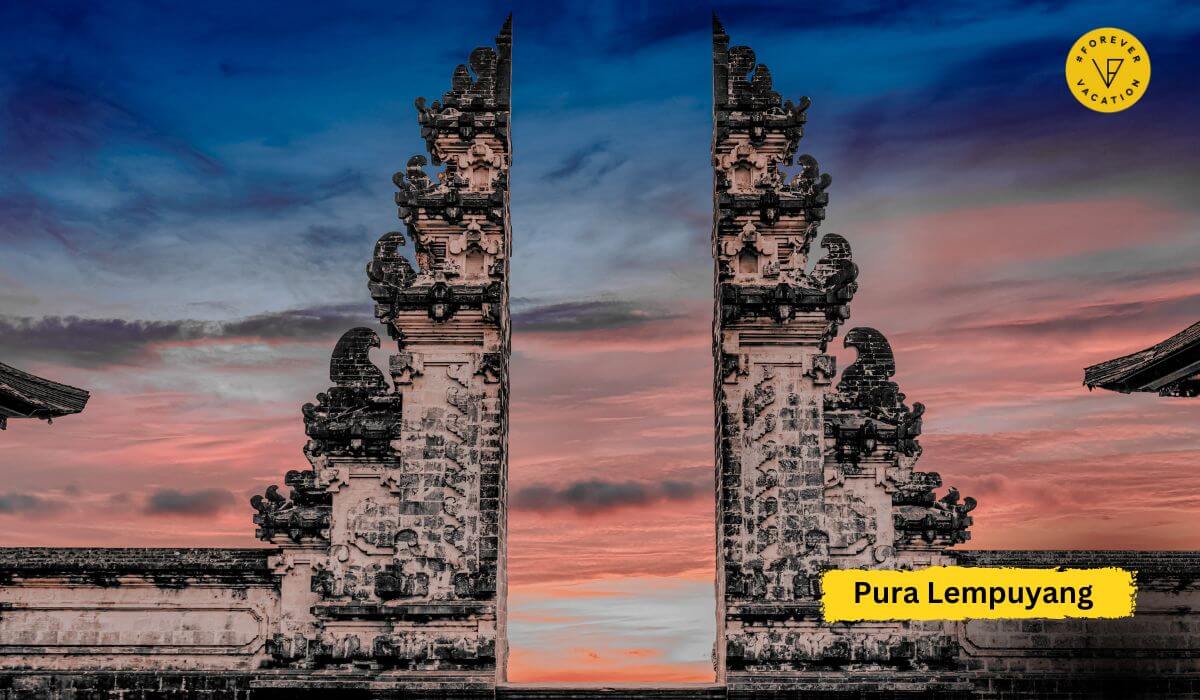
You’ve definitely seen it: two towering stone gates framing the mighty Mount Agung with a perfect reflection below. This is Pura Lempuyang, often dubbed the “Gates of Heaven.” It’s not just a viral photo spot—it’s one of Bali’s oldest and most sacred temples.
Located high on the slopes of Mount Lempuyang, this temple is part of a series of seven that form a spiritual pilgrimage route. While most visitors come for that one iconic shot, those who continue the climb experience a deeper spiritual journey, breathtaking views, and far fewer people.
What to Expect:
- The famous split gate photo is right at the entrance—but be prepared to queue
- The entire pilgrimage involves over 1,700 steps through jungle and temple gates
- Mount Agung in the background adds to the dramatic beauty—if the skies are clear
- Locals create the “reflection” using a mirror trick under your phone—not an actual pool
How to Get There:
- Located in East Bali, about 2.5 hours from Ubud
- Pair it with nearby Tirta Gangga or Virgin Beach for a full day trip
- You must take a shuttle from the parking area to the temple base (included in ticket)
Insider Tips:
- Arrive before 7 AM if you want to avoid a long queue for the gate photo (waits can be up to 3 hours mid-day)
- Dress respectfully—a sarong is mandatory and provided at the entrance
- Don’t stop at the photo op—explore the upper temples for a quieter, more meaningful visit
- If it’s cloudy, you won’t see Mount Agung in the background—check the weather before you go
12. Uluwatu Beach – Surfers’ Paradise with Cliffside Charm
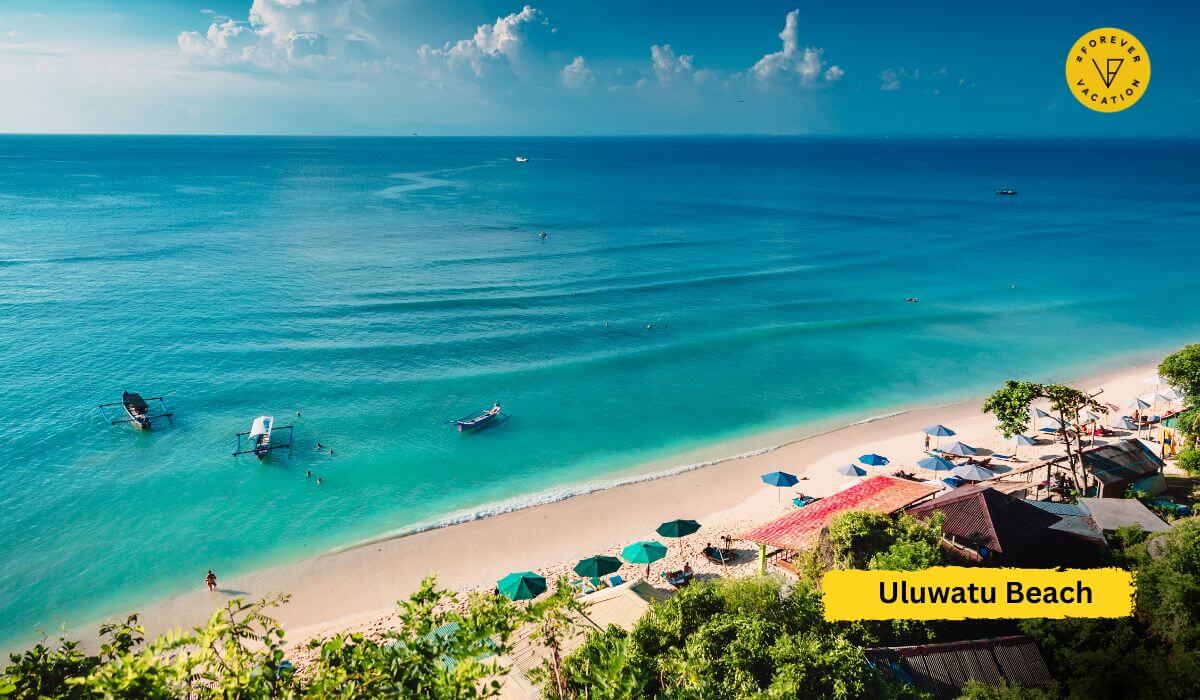
Tucked beneath dramatic limestone cliffs, Uluwatu Beach (also known as Blue Point Beach) is one of Bali’s most epic coastal gems. It’s not just a beach—it’s a vibe. From legendary surf breaks to laid-back cafés perched above the sea, this spot perfectly blends adventure and relaxation.
What makes Uluwatu Beach truly stand out is its raw beauty and energetic surf scene. Surfers from around the world gather here to ride the waves, while others come to kick back with a drink and soak in the million-dollar sunset views.
What to Do Here:
- Watch or join the world-class surfers carving waves
- Grab a drink at the iconic Single Fin bar and watch the sunset in style
- Explore the hidden sea caves and tide pools at low tide
- Snap amazing cliffside shots from above—it’s social media gold
- Beach clubs, Uluwatu Temple and the Kecak fire dance are just to name a few attractions there.
How to Get There:
- Located in South Bali, near Uluwatu Temple
- A steep staircase leads down to the beach through shops and warungs—wear comfy shoes!
- Combine it with a day trip to Uluwatu Temple and nearby beaches like Padang Padang or Bingin
Insider Tips:
- Low tide is best for accessing the beach and exploring the caves
- Bring a beach mat or towel—there aren’t many loungers down on the sand
- Watch your step—reef rocks can be sharp, so water shoes help
- Stay for sunset, then head to Single Fin for live music, food, and great energy
13. Nusa Lembongan - Bali’s Laid-Back Island Escape
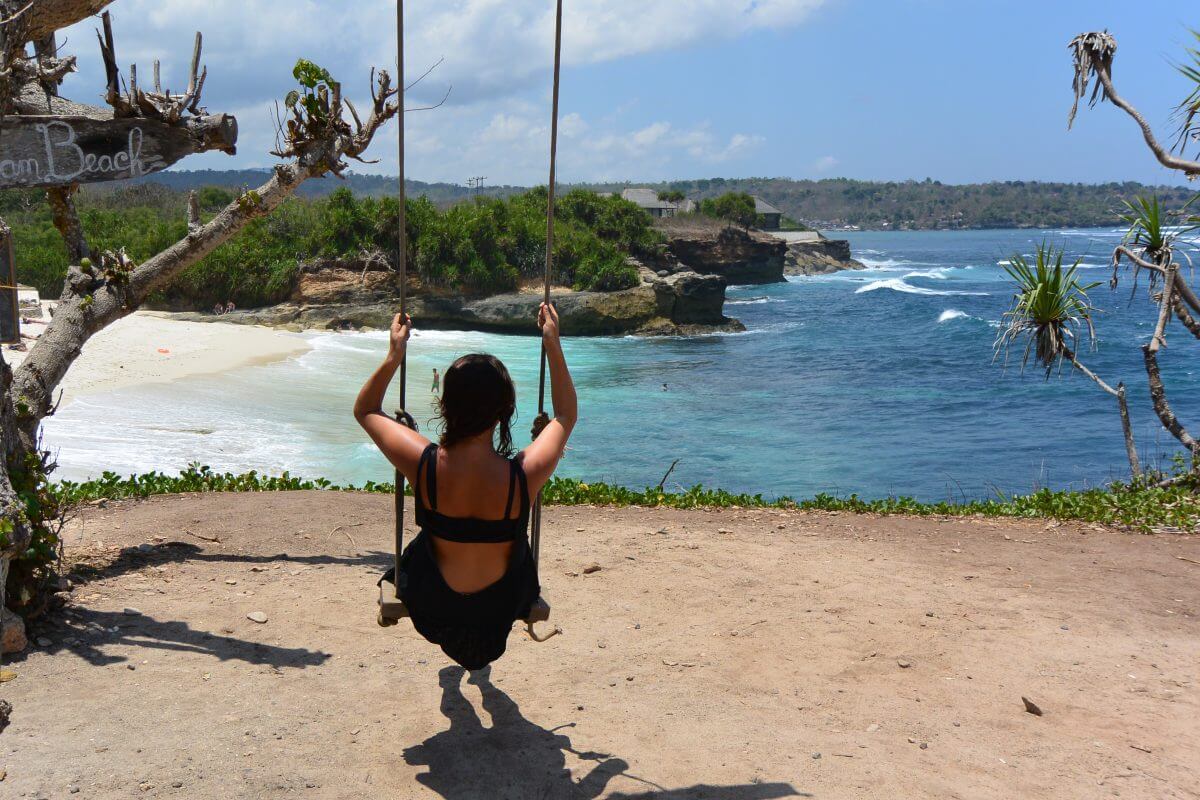
Nusa Lembongan is one of Bali’s highlights as a place to stay during your Bali vacation. The island is just a 25-minute boat ride from Sanur, Bali. It’s much more peaceful compared to the Main island of Bali and it’s a great escape from all the crowds. Together with the near-located islands Nusa Ceningan and Nusa Penida, the Nusa Islands offer a full vacation outside of the Bali mainland including beautiful beaches, coastal cliffs drop, hiking and snorkeling with Manta Rays.
Nusa Lembongan is known for beautiful attractions such as Dream Beach, Devil’s Tears and Mushroom Beach.

Highlights You Can’t Miss:
- Dream Beach – white sands, blue water, and stunning sunsets
- Devil’s Tear – dramatic cliffs where waves crash with force (and flair!)
- Mushroom Bay – a peaceful cove great for swimming and relaxing
- Mangrove Tour – paddle through tranquil mangrove tunnels via kayak or boat
- Snorkeling/Diving – vibrant coral, sea turtles, and manta rays nearby!
How to Get There:
- Take a 30-minute fast boat from Sanur Beach in Bali
- Boats leave daily and are easy to book through tour operators or online
- Once you arrive, get around via scooter, golf cart, or bicycle
Important Tips:
- Stay at least one night—sunsets and early mornings here are magical and crowd-free
- Visit during weekdays to avoid weekend travelers from Bali
- Pair it with Nusa Ceningan (connected via a yellow bridge) for more views and cliff jumps
- Book a snorkeling tour to Manta Point—it’s one of the best marine experiences near Bali
Our Best Selling Tour
- All-Inclusive
- Nusa Lembongan Instagram Tour: The Most Famous Spots
Jet off to Nusa Lembongan on this all-inclusive, private tour. With idyllic, dream beaches, mystic mangrove forests and a speedboat experience, this Bali tour i...
HK$833/pp Learn more

14. Lovina Beach – Sunrise Dolphins & Northern Calm

Far from the crowds of South Bali, Lovina Beach offers a peaceful, off-the-beaten-path escape where the vibe is slow, soulful, and refreshingly local. Known for its black volcanic sand, calm waters, and famous dolphin sightings at dawn, Lovina is a reminder that Bali isn’t just beaches and temples—it’s a whole island of contrasts.
This is the place to go when you want to breathe, explore, and connect with nature—without selfie sticks in sight.
Why Visit Lovina:
- Early morning dolphin tours where you’ll see pods swimming alongside your boat
- Calm, swimmable waters—perfect for paddleboarding or snorkeling
- A great base to explore North Bali waterfalls, hot springs, and temples
- Less touristy = more authentic Balinese village life
Ways to Get There:
- Located in North Bali, about 2.5–3 hours from Ubud or Canggu
- Best reached via private driver—the scenic drive includes rice fields and mountain views
- Stay at a local guesthouse or beachfront villa for a peaceful overnight experience
Expert Tips:
- Book a dolphin tour with a reputable local operator—avoid those that chase or crowd the dolphins
- Combine your visit with Gitgit Waterfall or Banjar Hot Springs, both nearby
- Catch the sunrise from the boat—it’s serene, surreal, and unforgettable
- Bring a jacket—the early morning ocean breeze can be chilly
15. Canggu - Bali’s Coolest Coastal Hotspot
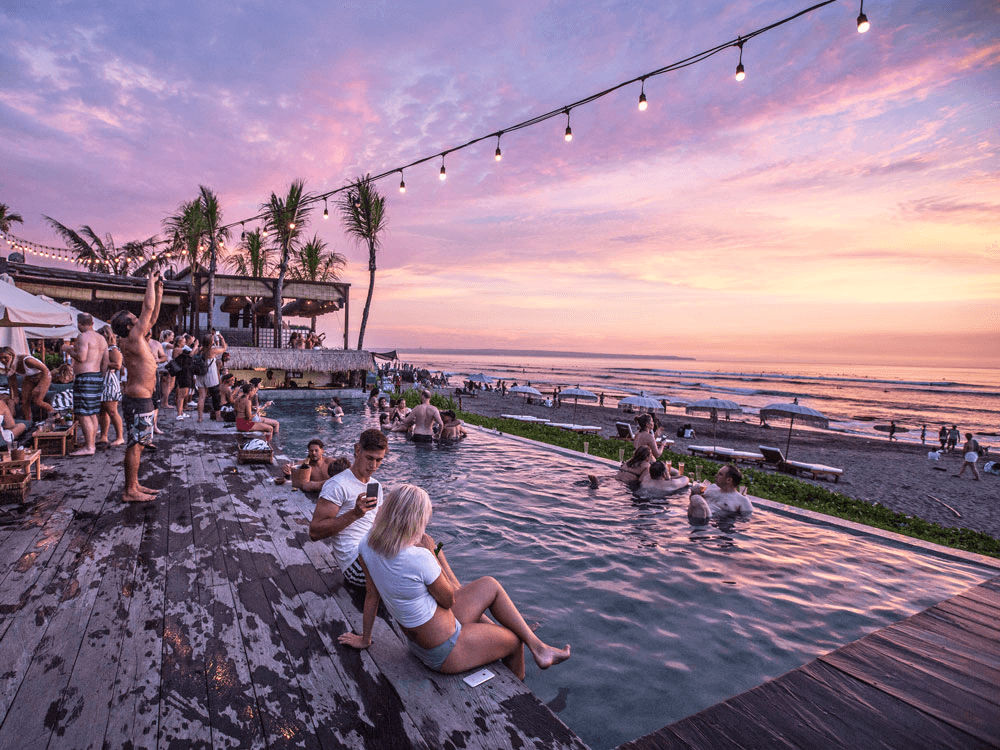
Canggu hasn’t been on the tourist map for very long. And it’s rapidly becoming a popular spot for digital nomads seeking a life closer to the beach than you would find it between the cool mountains of Ubud.
Bali’s hippest town is especially popular among ex-pats. It is visible by the many modern villas popping up between the lush green rice fields and many new cafés owned primarily by people from overseas; yes, many Australians are among them too.
You can visit anytime, though a few things might affect your decision. The weather is tropical, with high temperatures all year around. High season for tourists is generally during July and August, and many Australians hop over as it’s winter then. Still, before and after, those months are even better, like May, June, and September.
Then it’s dry season, which means it’s less humid, and prices for accommodation are still a little cheaper than in the high season.
If you are looking for a nice place to chill, mingle with ex-pats and have a coffee overlooking the ocean, Canggu would be the place.
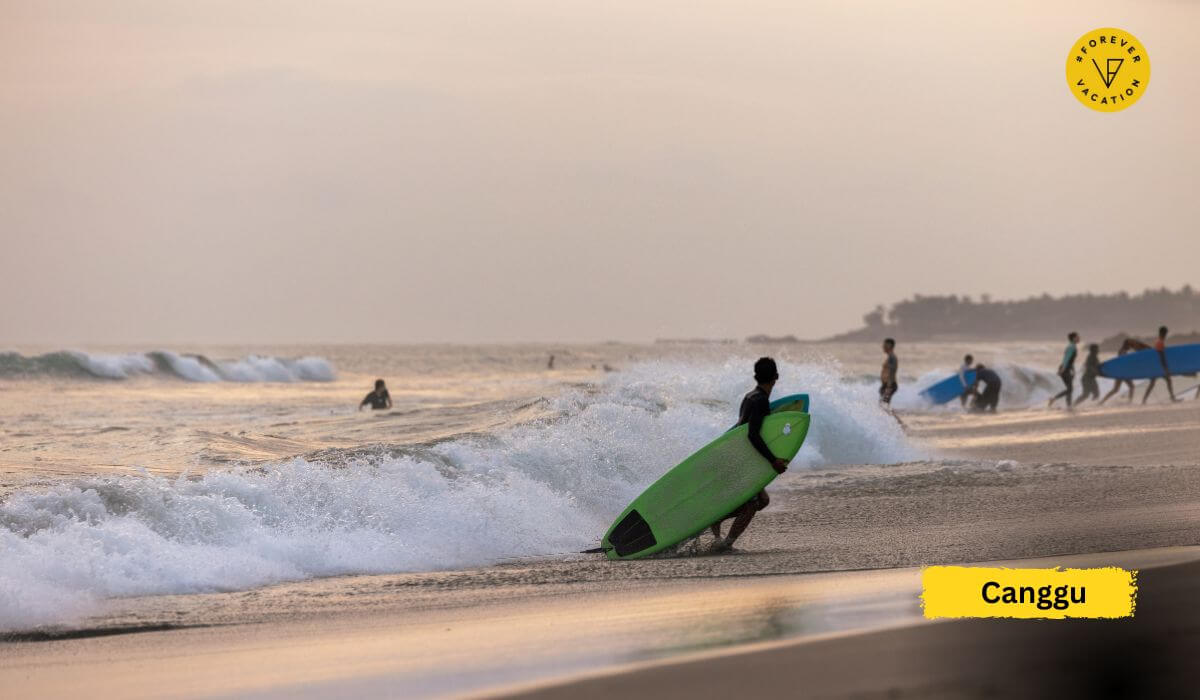
Why You’ll Fall for Canggu:
- Some of Bali’s best surf spots (like Batu Bolong & Echo Beach)
- A thriving café culture with Insta-worthy brunches and strong coffee
- Endless wellness spots—from yoga shalas to ice baths to beach massages
- A perfect balance of beach, community, and creativity
What to Do in Canggu:
- Take a surf lesson or just chill on the black sand beaches
- Café-hop through top spots like Crate Café, The Shady Shack, and Copenhagen
- Shop for boho-chic threads at local boutiques and Sunday markets
- Wind down at La Brisa, one of Bali’s most beautiful beachfront clubs
- Watch the sunset with your feet in the sand and a drink in hand
Insider Tips:
- Traffic in Canggu can get hectic—scooter is the fastest way to move around
- Visit in shoulder season (May or September) for the best mix of energy and space
- Don’t skip the rice field paths just outside town—they’re quiet and gorgeous
- Canggu is growing fast—book your stays in advance, especially in peak season
Recommended Articles
Get your VACATION on!
Expertly curated emails packed full of vacation inspiration, travel tips and more!



 +1 617 404 2125
+1 617 404 2125




